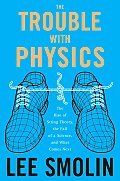the trouble with singing sand
 Sand can sing loud, sending out booms or squeaks when it slides down the side of a dune—but no one is sure why. I wrote about this in July for Seed, reporting on the latest findings about the singing sand.
Sand can sing loud, sending out booms or squeaks when it slides down the side of a dune—but no one is sure why. I wrote about this in July for Seed, reporting on the latest findings about the singing sand.But it was somewhat disappointing because of all the experts I talked to who are working on this problem—and, not surprisingly, there are only a few—it seemed none of them could agree on much of anything to do with how the sand is making this sound.
I thought, how complicated can this be? We can see stars billions of light years away, and probe inside atomic nuclei, but can't figure out why this sand squeaks?
Partly, I'm sure, it's because not many people have worked on it. And partly because it's a trickier problem than it seems at first. But part of it, too, seems to be sociology.
Though you might think singing sand is a fun, maybe somewhat frivolous project for scientists to work on, the various people who work on singing sand have bitter disagreements about their findings. Physics Web reports on this in their latest issue, and it's a fascinating story of science in action.
 Also, I just finished reading Lee Smolin's book The Trouble with Physics, which is really about the trouble with fundamental physics, especially string theory. This theory is aiming to undercover the very most basic laws of nature, and bring together the fundamental theories that we have now—quantum physics and Einstein's relativity theories—under one umbrella.
Also, I just finished reading Lee Smolin's book The Trouble with Physics, which is really about the trouble with fundamental physics, especially string theory. This theory is aiming to undercover the very most basic laws of nature, and bring together the fundamental theories that we have now—quantum physics and Einstein's relativity theories—under one umbrella.But too many string theorists have bought too much into their own program, Smolin argues, so that it's not clear if the whole area of string theory will ever be fruitful or testable. That is, it's still not clear whether it has anything at all to do with reality.
It seems here it's the flip side of the situation with the singing sand dunes. There are a whole bunch of physicists working on string theory, devoting their lives to it, rather than just a few, independent researchers working on singing dunes as a side project. In string theory, it requires a lot of faith and optimism—I've heard this from people who work in the field—because there's no physical evidence yet that they're on the right track. With the singing dunes, there's clearly something happening, but it's not clear how it happens.
So even if there's too much faith and agreement within the string theory community, it's nice to see physicists still bickering over something like singing dunes. That's how some of the best science gets done. Maybe the trouble with physics is not enough trouble between physicists.













0 Comments:
Post a Comment
<< Home